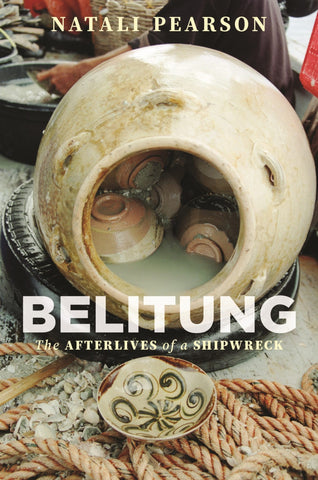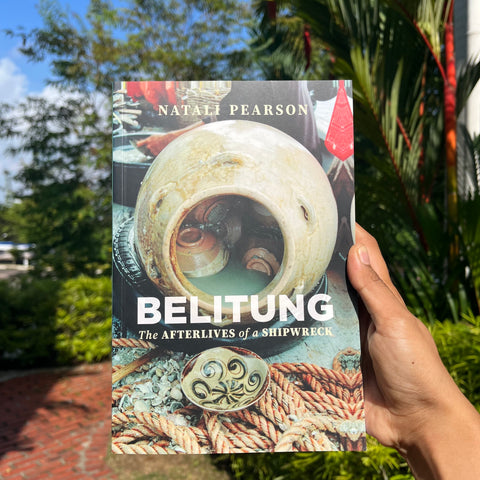Belitung: the Afterlives of a Shipwreck
$28.00 SGD
By Natali Pearson
In 1998, the Belitung, a ninth-century western Indian Ocean–style vessel, was discovered in Indonesian waters. Onboard was a full cargo load, likely intended for the Middle Eastern market, of over 60,000 Chinese Tang-dynasty ceramics, gold, and other precious objects. It is one of the most significant shipwreck discoveries of recent times, revealing the scale of ancient commercial endeavors and the centrality of the ocean within the Silk Road story.
But this shipwreck also has a modern tale to tell, of how nation-states appropriate the remnants of the past for their own purposes, and of the international debates about who owns—and is responsible for—shared heritage. The commercial salvage of objects from the Belitung, and their subsequent sale to Singapore, contravened the principles of the 2001 UNESCO Convention on the Protection of the Underwater Cultural Heritage and prompted international criticism and debate. The resulting controversy continues to reverberate in academic and curatorial circles. Today, the finds are proudly displayed at Singapore's Asian Civilisations Museum as the Tang Shipwreck Collection. But major museums have refused to host international traveling exhibitions of the collection, and some Western archaeologists maintain the objects should be thrown back in the sea rather than ever go on display.
Shipwrecks are anchored in the public imagination, their stories of treasure and tragedy told in museums, cinema, and song. At the same time, they are sites of scholarly inquiry, a means by which maritime archaeologists interrogate the past through its material remains. Every shipwreck is an accidental time capsule, replete with the sunken stories of those on board, of the personal and commercial objects that went down with the vessel, and of an unfinished journey. In this moving and thought-provoking reflection of underwater cultural heritage management, Natali Pearson reveals valuable new information about the Belitung salvage, obtained firsthand from the salvagers, and the intricacies in the many conflicts and relationships that developed. In tracing the Belitung’s lives and afterlives, this book shifts our thinking about shipwrecks beyond popular tropes of romance, pirates, and treasure, and toward an understanding of how the relationships between sites, objects, and people shape the stories we tell of the past in the present.
"The history of maritime trade is central to the Asian Civilisations Museum, as we explore and present Asia and the world from the perspective of Singapore as port city. The Tang Shipwreck is compelling evidence of that trade. The issues that have surrounded the shipwreck as heritage are no less fascinating today and important to explore. Belitung is a welcome addition to the discourse." - Kennie Ting, former director, Asian Civilisations Museum & Peranakan Museum
“This is the first major study of Southeast Asian shipwrecks to show the problems of projecting the present onto the past. Elegantly written, this book takes us into complex stories behind how ancient Asian trade routes continue to define the region.” - Adrian Vickers, University of Sydney
“Shipwrecks raise fascinating and important questions about cultural heritage ‘ownership’ and curatorial practice today. Pearson’s study of the Belitung and its ‘afterlives’ exemplifies this, as it peels back the layers on the politics of a historically significant form of ‘shared heritage’ through a narrative that weaves together multiple countries, institutes, communities and competing forms of expertise. This is a fascinating study that represents a major contribution to Southeast Asian archaeology, maritime heritage and the debate about museum collections more broadly.” - Professor Tim Winter, Asia Research Institute, NUS
University of Sydney, Australia.
Publication Year: 2023
Paperback
230pp / 229 x 152mm
11 b/w figures + 2 maps
ISBN: 978-981-325-267-7
Published in Southeast Asia by NUS Press



